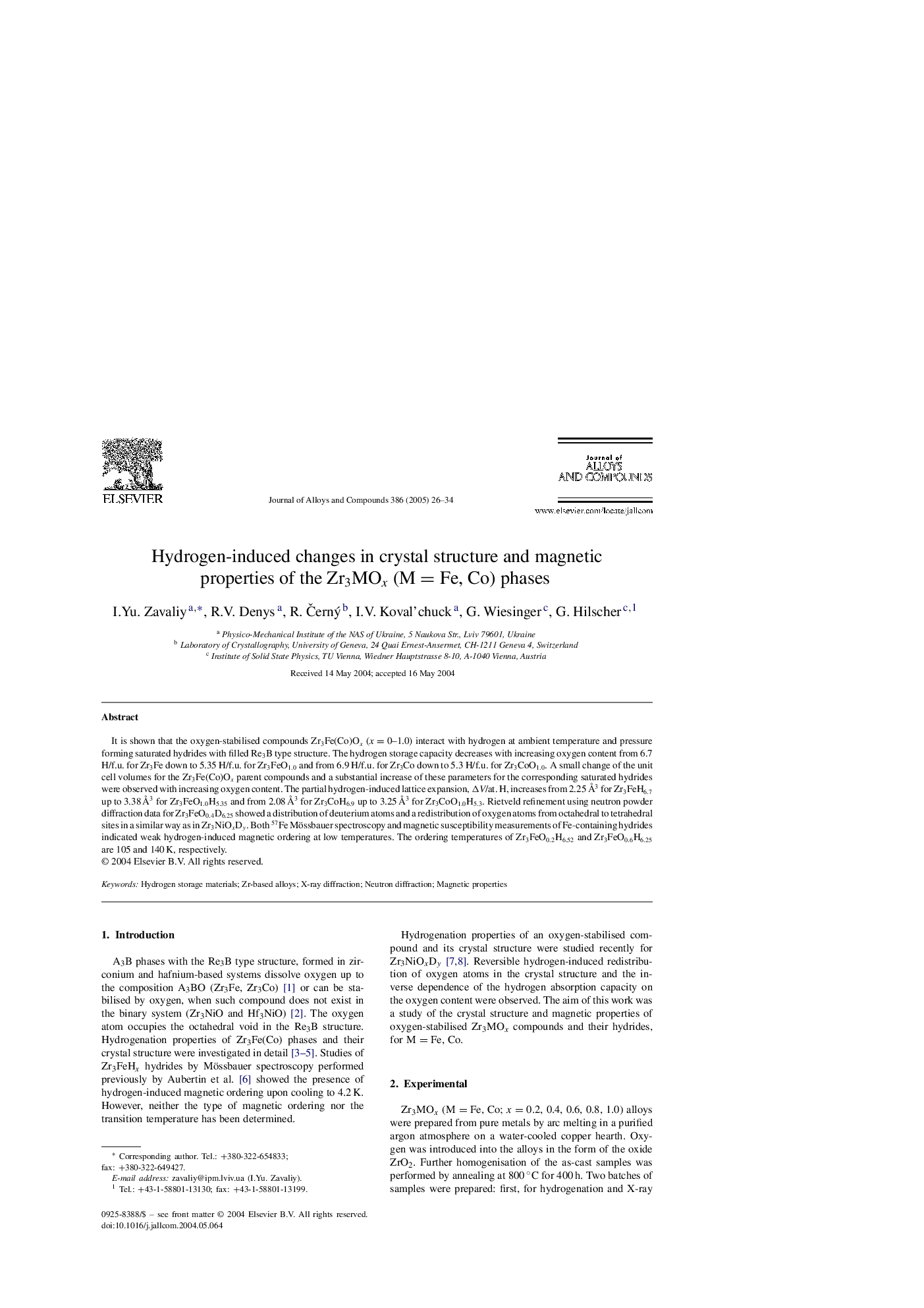| Article ID | Journal | Published Year | Pages | File Type |
|---|---|---|---|---|
| 9804196 | Journal of Alloys and Compounds | 2005 | 9 Pages |
Abstract
It is shown that the oxygen-stabilised compounds Zr3Fe(Co)Ox (x = 0-1.0) interact with hydrogen at ambient temperature and pressure forming saturated hydrides with filled Re3B type structure. The hydrogen storage capacity decreases with increasing oxygen content from 6.7 H/f.u. for Zr3Fe down to 5.35 H/f.u. for Zr3FeO1.0 and from 6.9 H/f.u. for Zr3Co down to 5.3 H/f.u. for Zr3CoO1.0. A small change of the unit cell volumes for the Zr3Fe(Co)Ox parent compounds and a substantial increase of these parameters for the corresponding saturated hydrides were observed with increasing oxygen content. The partial hydrogen-induced lattice expansion, ÎV/at. H, increases from 2.25Â Ã
3 for Zr3FeH6.7 up to 3.38Â Ã
3 for Zr3FeO1.0H5.35 and from 2.08Â Ã
3 for Zr3CoH6.9 up to 3.25Â Ã
3 for Zr3CoO1.0H5.3. Rietveld refinement using neutron powder diffraction data for Zr3FeO0.4D6.25 showed a distribution of deuterium atoms and a redistribution of oxygen atoms from octahedral to tetrahedral sites in a similar way as in Zr3NiOxDy. Both 57Fe Mössbauer spectroscopy and magnetic susceptibility measurements of Fe-containing hydrides indicated weak hydrogen-induced magnetic ordering at low temperatures. The ordering temperatures of Zr3FeO0.2H6.52 and Zr3FeO0.6H6.25 are 105 and 140Â K, respectively.
Keywords
Related Topics
Physical Sciences and Engineering
Materials Science
Metals and Alloys
Authors
I.Yu. Zavaliy, R.V. Denys, R. Äerný, I.V. Koval'chuck, G. Wiesinger, G. Hilscher,
